
The Narwhal’s in-depth environmental reporting earns 11 national award nominations
From disappearing ice roads to reappearing buffalo, our stories explained the wonder and challenges of...
Ken Wu became captivated by old-growth forests at the age of 10, when he saw a photograph of four couples dancing on a giant red cedar stump at the turn of the 20th century. As a UBC ecology student in the early 1990s, smitten by the grandeur of ancient trees, he helped organize rallies and protests to protect the Walbran and Capilano valleys and Clayoquot Sound.
“I became a big tree fanatic,” jokes Wu, executive director of the Endangered Ecosystems Alliance and co-founder and former executive director of the Ancient Forest Alliance.
It’s been 30 years since Wu embarked on a quest to save B.C.’s oldest forests and trees, which he equates to protecting the last of the world’s endangered elephants or whales. “They’re some of the most impressive, grandest organisms on our planet.”
But despite decades of protests, petitions and campaigns, only 2.7 per cent
of B.C.’s original high productivity old-growth forests remains — and more than three-quarters of that small fraction is slated to be logged.
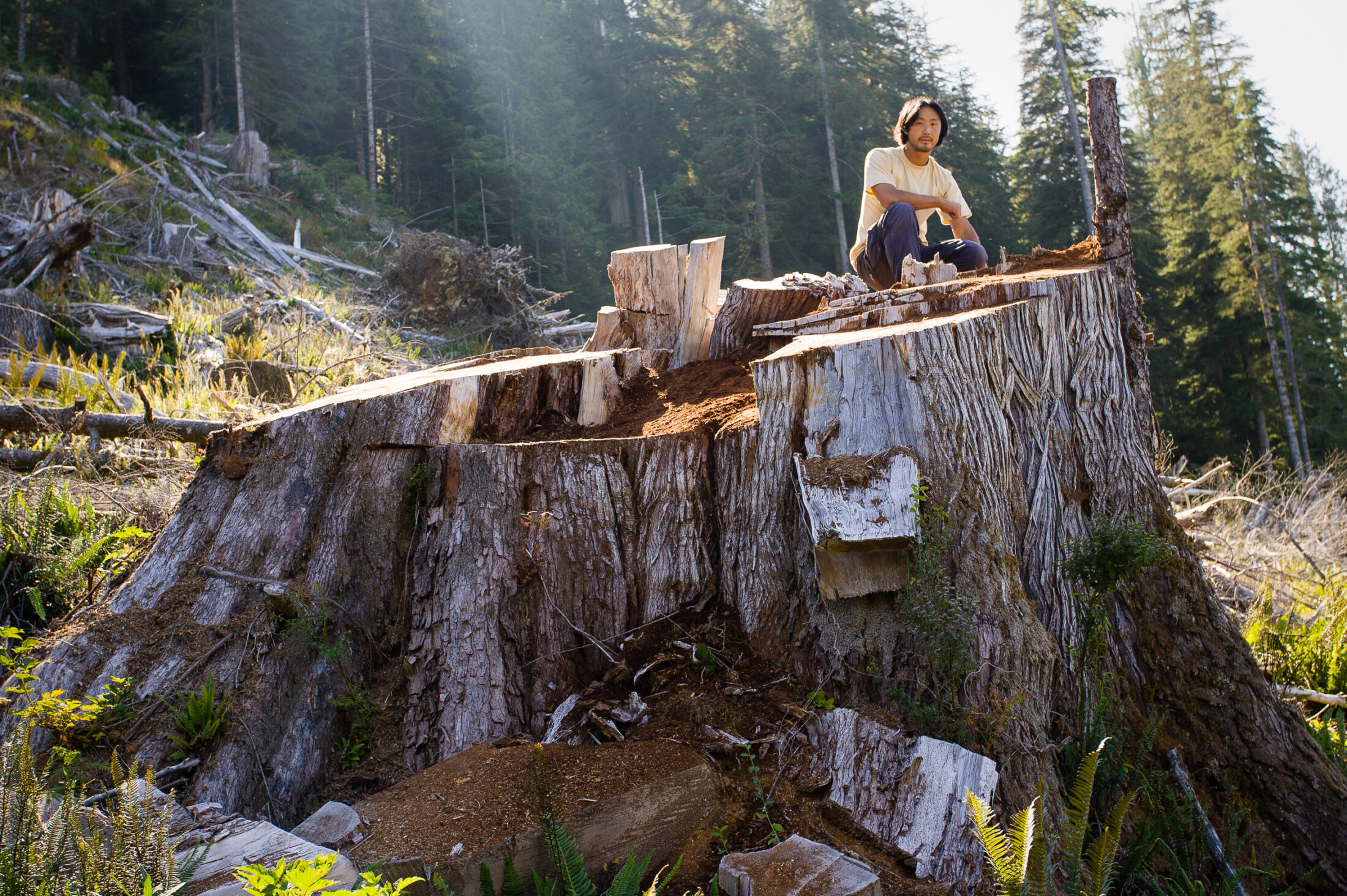
Ken Wu sits on a cedar stump in the Walbran Valley on Vancouver Island. Wu believes government must prioritize finding ways to finance the protection of B.C.’s remaining old-growth forests. Photo: TJ Watt
High productivity forests, where the biggest trees are found, contain the greatest biodiversity and are home to the most endangered species, such as mountain caribou and marbled murrelet.
Today, Wu believes there is finally an opening to conserve the last of B.C.’s unprotected old-growth forests, which are essential to Indigenous cultures, supply clean water and carbon storage, and support wild salmon and major tourism and recreation industries.
“There’s no way to save old-growth unless the government finances the alternative — an economy and jobs tied to saving old-growth forests,” Wu tells The Narwhal.
Along with First Nations leaders, other conservationists, scientists and several politicians, Wu is putting forward a new plan to finance old-growth forest protection in the upcoming B.C. and federal budgets and COVID-19 pandemic economic recovery plans.
“The key thing is that First Nations communities need an economic alternative to the past dependency on old-growth logging that’s been facilitated by the B.C. government,” Wu says.
“The benefits of old-growth logging for First Nations communities is in the tens or hundreds of millions of dollars. Who just walks away from that?”
Conservation financing is gaining momentum around the world. In B.C., perhaps the best-known example of investing money in sustainable jobs that protect the environment is in the Great Bear Rainforest, where conservation finance programs have created more than 100 businesses
and 1,000 permanent jobs in ventures ranging from ecotourism to a sustainable scallop fishery.
Wu says a number of factors have converged to make conservation financing viable almost immediately, before the last of B.C.’s unprotected high productivity old forests are logged. On Vancouver Island, 80 per cent of old-growth forests have been logged and less than 10 per cent of the valley bottoms, where the largest trees grow, are still intact, he points out.
“Time is of the essence,” Wu says. “The trees are falling now.”
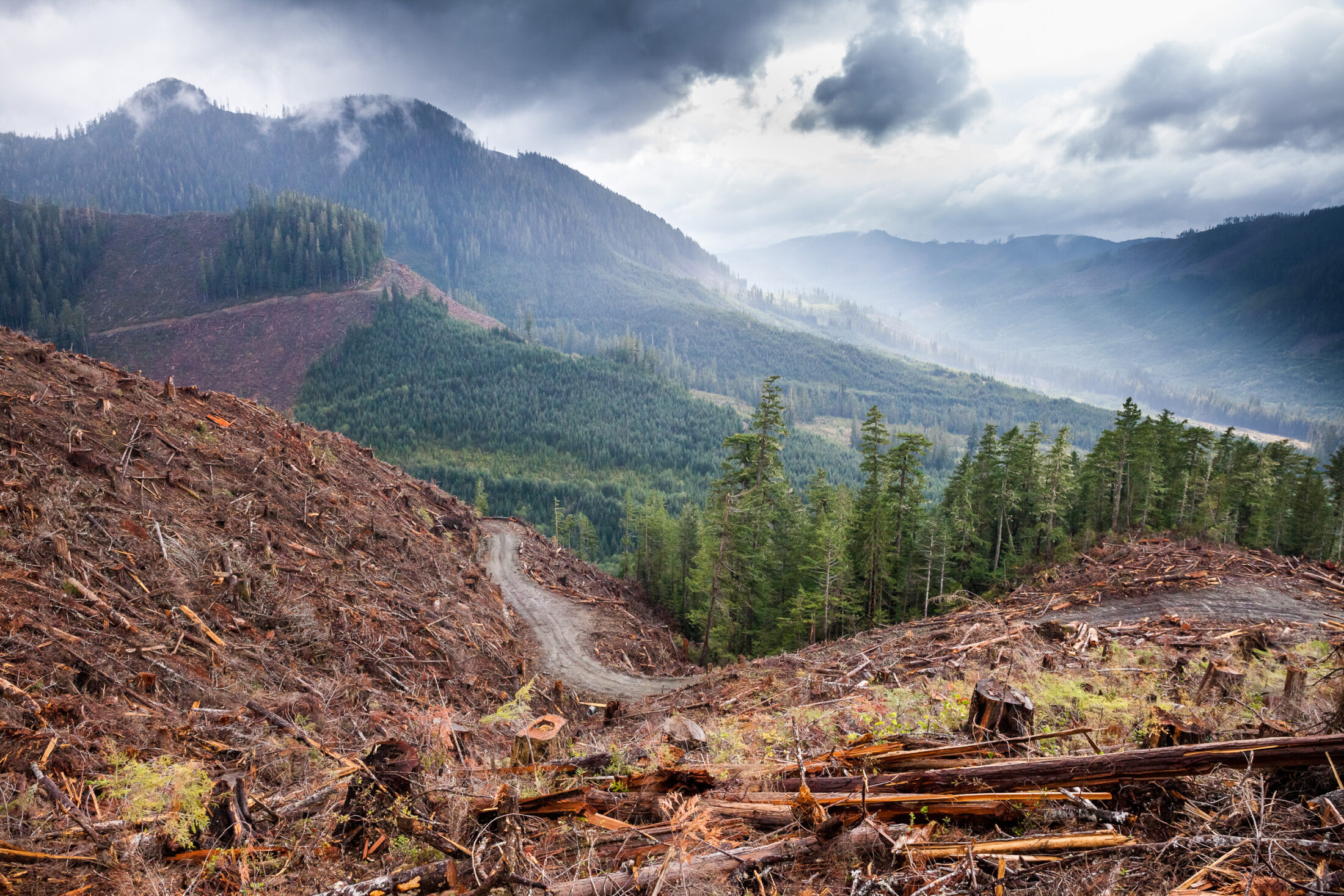
Clearcut logging in the Walbran Valley. The Wilderness Committee, which is campaigning for greater protections for the Walbran, estimates the equivalent of 34 soccer fields per day are logged on Vancouver Island. Photo: TJ Watt
During the recent B.C. election campaign, the NDP committed to implementing all 14 recommendations made by an old-growth strategic review panel, which called for a paradigm shift in the way the province manages old-growth and said all recommendations should be implemented within three years.
Among other findings, the panel said old forests are not a renewable resource and should be managed for ecosystem health.
Foresters Al Gorley and Garry Merkel, who headed the panel, recommended the B.C. government immediately defer development in old forests “where ecosystems are at very high and near-term risk of irreversible biodiversity loss.”
“You can’t get those deferrals, you can’t implement those recommendations, unless there’s an economic alternative for First Nations,” Wu says.
“Logging would continue in the medium-productivity sites. But for high productivity, that’s got to come to an end as soon as possible. And that can only come about if they put the money up as soon as possible, so First Nations have an alternative.”
The NDP has not committed to financing a forestry transition, Wu points out. “They haven’t committed yet to financing Indigenous protected areas and First Nations land use plans in lieu of old-growth logging.”
Nor have they committed to covering employment and net revenues for First Nations so immediate deferrals recommended by the panel can be instituted. Wu says.
“That’s a key piece … If they commit to all 14 recommendations with the critical financing, then I’d say we’re well on the way to getting the old-growth protected. But it’s disingenuous on their side to not provide the financing, and still state for optical purposes that they support all the recommendations.”
“It’s sort of like a government saying they support health care and education, just not the funding. It’s a hollow promise if you don’t include the funding.”
In response to the panel’s recommendations, the NDP government announced in September, shortly before calling the snap election, that logging would be temporarily deferred in nine areas totalling 353,000 hectares. During the election campaign, the NDP took out ads saying it had “protected” 353,000 hectares of old-growth forest.
But when Wu and others did the number crunching, they found the deferrals — which included areas that had already been logged and areas that actually included no old trees — contained only 3,800 hectares of high productivity old-growth.
“So far the NDP have been defenders of the status quo. But they’re being pushed,” Wu says, noting old-growth logging was a central issue in electoral battles between the NDP and the Greens.
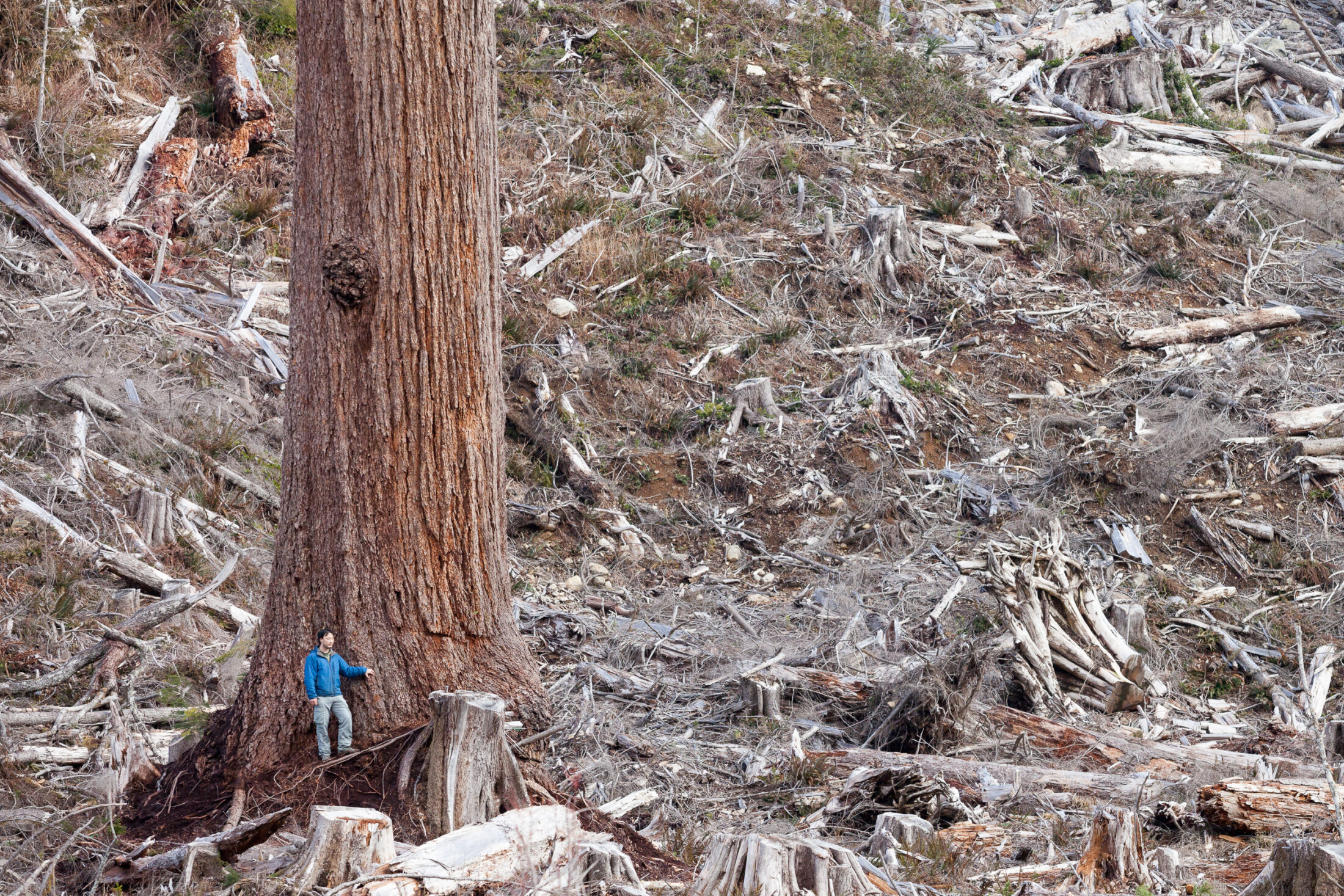
Wu stands near Big Lonely Doug, an old-growth Douglas Fir tree left standing in a clearcut near Port Renfrew. Photo: TJ Watt
Grand Chief Stewart Phillip, president of the Union of B.C. Indian Chiefs, says all levels of government are notorious for issuing “grandiose, public commitments to do the right thing,” but don’t follow through in practice.
“That’s been the pattern, the dynamic, between Indigenous peoples and government for decades,” he says in an interview. “Premier [John] Horgan certainly makes the correct statements, but when it comes to follow through we’re not seeing that materialize in very concrete measures, due to the pressure and the backlash coming from industry.”
The Grand Chief is urging “intense consultation, from the ground up” — with the UN Declaration on the Rights of Indigenous Peoples as the framework — to find alternatives to logging the last of B.C.’s old-growth forests. The province enshrined the declaration into law in 2019.
“There is no shortcut,” Grand Chief Phillip says. “I’m saying ‘put away your power saws and let’s have those discussions. Let’s live up to those commitments.’ ”
“It makes no sense to have a protracted dialogue if, at the end of it, we discover the old-growth is gone.”
Old-growth forests are sacrosanct not only for Indigenous peoples but for many British Columbians, the Grand Chief says, pointing to decades of shared political activism.
“The worldview of our coalitions is that old-growth is off-limits, and it’s absolutely ludicrous to think otherwise. And yet there are delusional mindsets that suggest there is a way to somehow commercialize old-growth and clearcut old-growth.”
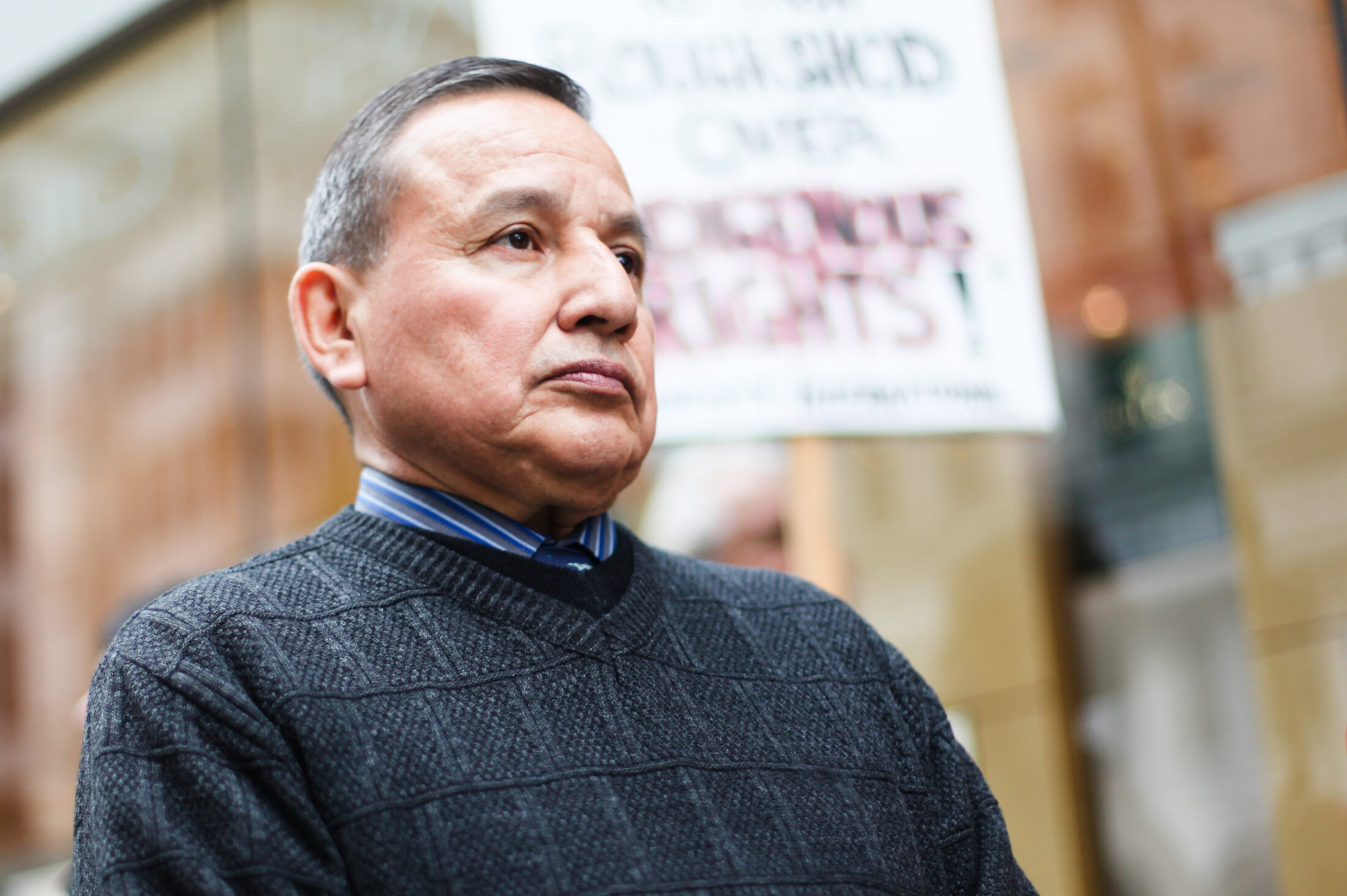
Grand Chief Stewart Phillip argues there is no sustainable way to commercialize old-growth logging and wants to see more support for eco-tourism, renewable energy and conservation projects that rely on Indigenous leadership. Photo: David P. Ball
In a statement in support of conservation financing for old-growth protection — backed by Nuu-chah-nulth Tribal Council president Judith Sayers and Tla-o-qui-aht councillor and canoe carver Joe Martin — Grand Chief Phillip says financing would support First Nations’ efforts to establish new Indigenous protected areas and land use plans for their territories and allow for the development of stewardship programs, such as Indigenous Guardians initiatives.
It would also foster sustainable economic development like cultural and eco-tourism, clean energy projects, value-added second-growth forestry and harvesting of non-timber forest products — providing equivalent economic alternatives to old-growth logging and jobs, the First Nations leaders say.
In September, at its annual general assembly, the Union of B.C. Indian Chiefs passed a resolution calling for the federal and provincial governments to finance old-growth protection, Indigenous protected areas and land use plans.
Sayers says the federal and B.C. governments have an obligation under the UN Declaration on the Rights of Indigenous Peoples to support Indigenous protected areas, tribal parks, cedar access strategies and land use plans, and to respect Indigenous peoples who manage old-growth within their territories.
“The free, prior and informed consent of Indigenous peoples must be obtained before the taking of old-growth, so that we may exercise our right to pursue the protection and management of our old-growth forests.”
Such forests are of great cultural and spiritual significance, protect wildlife and provide medicine and monumental cedar, among other uses, Sayers points out. “The forests are vanishing with the permission of the province.”
According to UBC forestry faculty professor Peter Arcese, a conservation financing plan to protect B.C.’s old-growth is “definitely viable and it’s a good idea.”
“There’s no question that conservation finance works,” says Arcese, who teaches in the forests and conservation sciences department and is the Forest Renewal BC chair in conservation biology.
In addition to government funding, Arcese says there are many other types of conservation financing, ranging from carbon credit programs to investments made to protect forests by offsetting the opportunity costs of development.
He says the old-growth conservation financing proposal is particularly interesting given broader efforts in Canada and around the world to engage Indigenous peoples in land management exercises that recognize a cultural right to manage the landscape, which leads to enhanced biodiversity.
“There are lots of synergies that I think could come out of it.”
“Every effort should be made to maintain those forests, particularly those which are somewhat intact and next to important features like rivers that produce chinook salmon or other species. We really should have stopped taking those forests quite some time ago.”
At the federal level, Wu points to the Trudeau government’s recent commitment to protect 30 per cent of Canada’s land and inland waters by 2030.
He says the government could earmark a subset of the $1.3 billion Canada Nature Fund for old-growth forest conservation.
The nature fund, which aims to expand Canada’s protected areas system — including through the creation of Indigenous protected areas — was established to meet national and international commitments and address the growing global biodiversity crisis.
Financing for old-growth forest protection could also be a separate item in the federal budget, Wu points out.
And conservation groups could augment financing by supporting Indigenous protected areas and land-use plans that conserve old-growth forests, he says. Half of $120 million in conservation funding for the Great Bear Rainforest was raised by conservation groups.
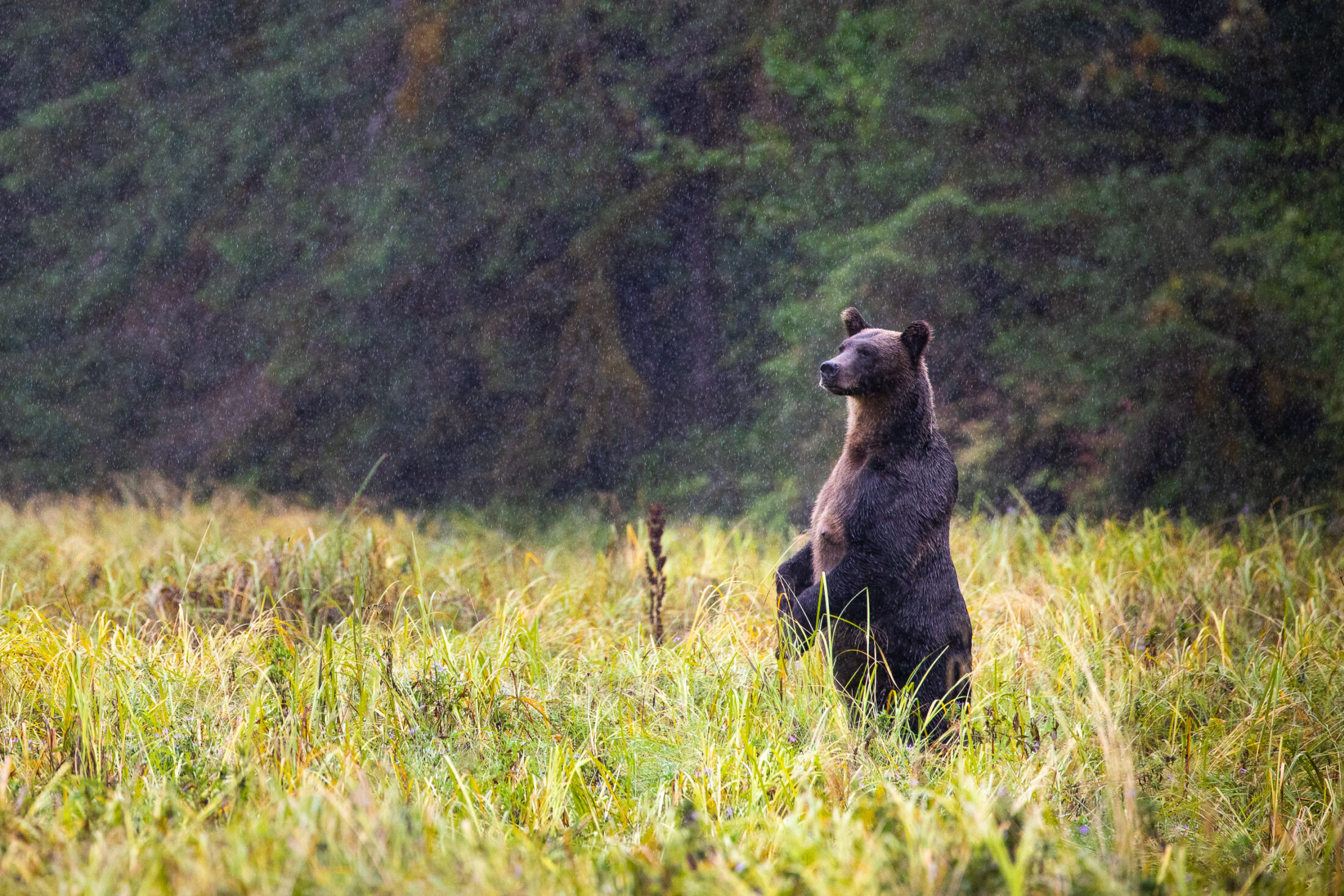
A grizzly in the Great Bear Rainforest. Photo: TJ Watt
The old-growth strategic review panel’s first recommendation is to engage the full involvement of Indigenous leaders and organizations to review the report and any policy or strategy development.
The panel also recommends establishing support programs for Indigenous groups to build land and forest management expertise and capacity.
B.C. First Nations Forestry Council CEO Charlene Higgins says funding is essential if First Nations are to have meaningful input into B.C.’s old-growth strategy.
“The province right now is wanting nations to participate in forest landscape level planning with no resources,” Higgins says in an interview.
The nations need funding to develop their own land-use plans and land management frameworks for their territories, she says.
“That will include where they define old-growth, so it protects not only old-growth areas but [also allows them to] define their Indigenous protected areas and develop management objectives to protect culturally important areas. It’s all tied together.”
A 2019 survey by the forestry council shows 50 per cent of First Nations in B.C. may not have their own land-use plans or land management frameworks for their territory, Higgins says.
“You’re asking them to define something when they don’t have the resources or information to truly work with their communities and identify where their old-growth priorities are, where their culturally important areas are.”
The council says it’s disappointed the B.C. government chose to engage with First Nations “after the fact” and not as partners in the old-growth strategic review process, especially given the cultural significance of many old-growth areas.
Grand Chief Phillip says Indigenous peoples must be integrally involved in all decisions related to the land — including decisions about old-growth, pipelines, mining and oil and gas development — and consultations must be intense, broad-based and extend far beyond band councils.
“Otherwise you have a We’suwet’en situation,” he says, referring to the protracted conflict over the Coastal GasLink pipeline. “That’s a fundamental issue that must be dealt with, and so far it’s just been swept aside. We have blockades and threats of future blockades, and so on.”
But now the general population is “waking up” to a personal responsibility to protect land and water, the Grand Chief says.
“The people who went out into the streets after the Biden victory are a manifestation of people beginning to realize that they have a responsibility to ensure the land and the water and the environment is properly cared for. And we can’t rely on governments. We can’t rely on corporations. We can’t rely on the courts. The courts keep kicking it down the road. So we can only rely on ourselves.”
“And the voice you’re hearing out there at the moment is ‘hands off old-growth.’ We’re just not going to stand idly by and watch it be clear-cut. That’s not going to happen in the province of B.C.”
Wu says land acquisition funding is also needed to purchase and protect private lands in B.C. with old-growth forests, noting the most endangered forest types are found largely on private land.
Mosaic (TimberWest and Island Timberlands) owns most of the private forest lands in the province and almost all of the old-growth on private lands, he says. “In order to protect the Koksilah ancient forest near Shawnigan Lake, or the Cameron Valley firebreak just upstream from Cathedral Grove, or the McLaughlin ridge in the drinking watershed of Port Alberni … to save those old-growth forests on private land there needs to be a land acquisition fund.”
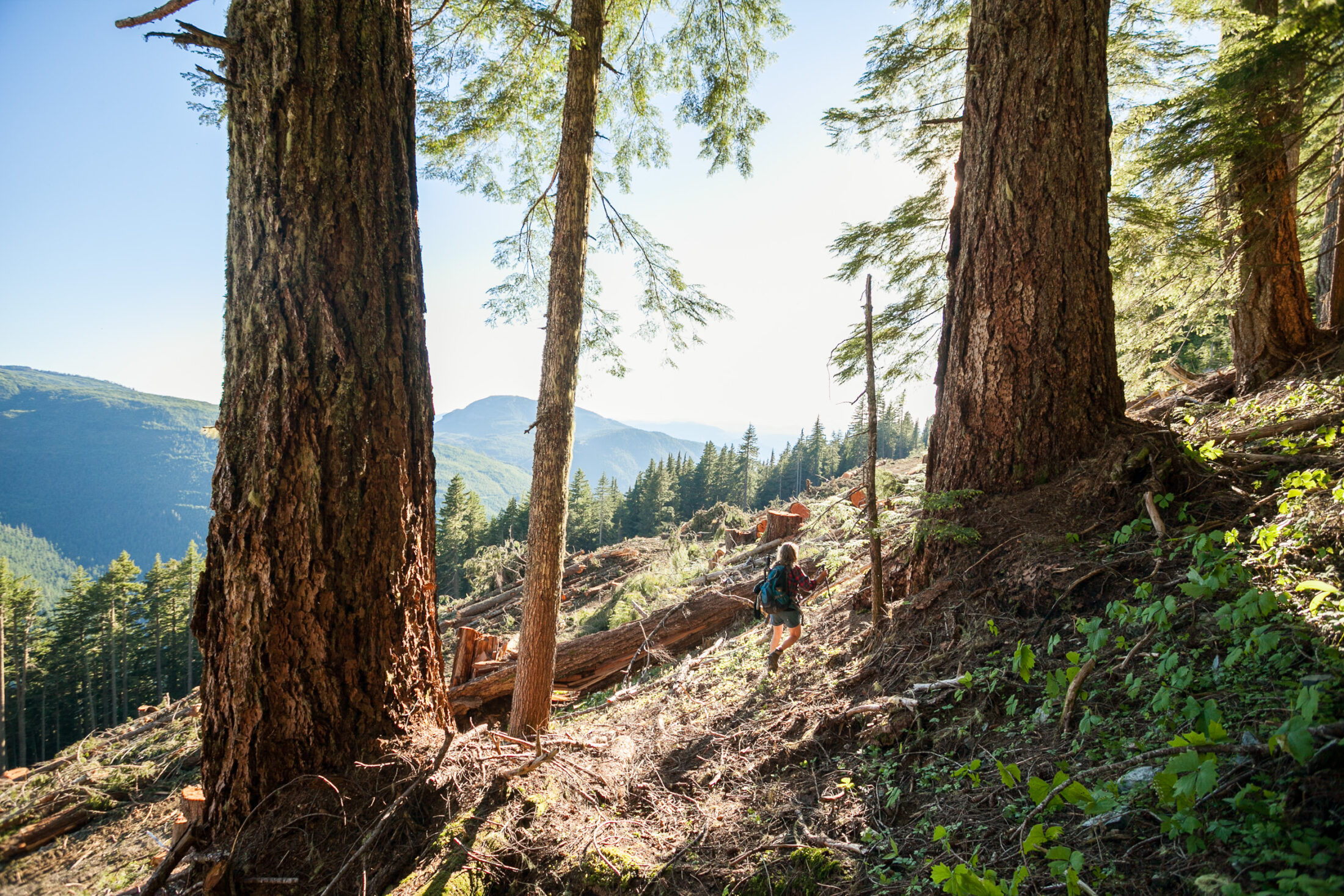
Logging on private land on the McLaughlin Ridge near Port Alberni on Vancouver Island. There are few rules governing logging on private property in B.C., where land owners are not required to file logging plans, replant trees or consult with neighbours. Photo: TJ Watt
Governments are increasingly looking at financial incentives for private landowners to conserve carbon-rich landscapes as part of utilizing natural climate solutions.
Wu said he and others have been asking the NDP government for three and a half years to set up an old-growth land acquisition fund starting at $40 million a year. “Here’s a province that looks like it’s willing to spend $15 billion on the Site C dam with endless runaway escalating costs,” Wu says. “They can’t even find $40 million?”
Three Vancouver Island politicians — Nanaimo city councillor Ben Geselbracht, Green Party MP Paul Manly and forest ecologist and Metchosin councillor Andy MacKinnon (who ran for the Green Party in the recent B.C. election) — have also announced their support for the conservation financing plan.
The newly elected B.C. government is not answering questions from the media during the interregnum period following the Oct. 24 provincial election, unless questions pertain to health and safety or statutory requirements.
B.C.’s next budget is expected in February. The federal government has not yet presented its 2020-21 budget, which it postponed due to the COVID-19 pandemic.
Updated Nov. 22, 2020, at 9:20 a.m. PST: This article was updated to correct the name of the Endangered Ecosystems Alliance. An earlier version referred to the group as the Endangered Species Alliance.
Get the inside scoop on The Narwhal’s environment and climate reporting by signing up for our free newsletter. On a warm September evening nearly 15...
Continue reading
From disappearing ice roads to reappearing buffalo, our stories explained the wonder and challenges of...

Sitting at the crossroads of journalism and code, we’ve found our perfect match: someone who...

The Protecting Ontario by Unleashing Our Economy Act exempts industry from provincial regulations — putting...
